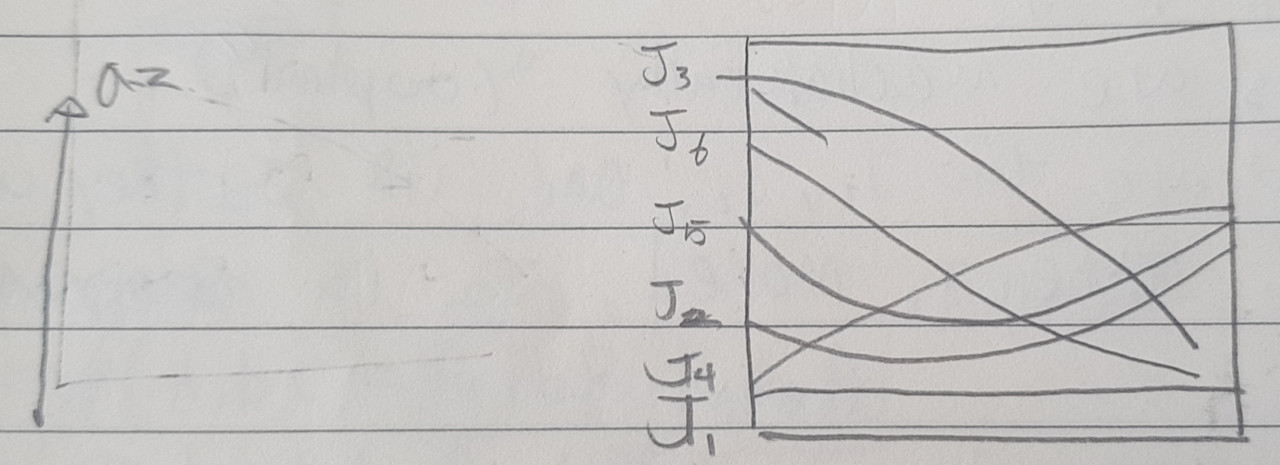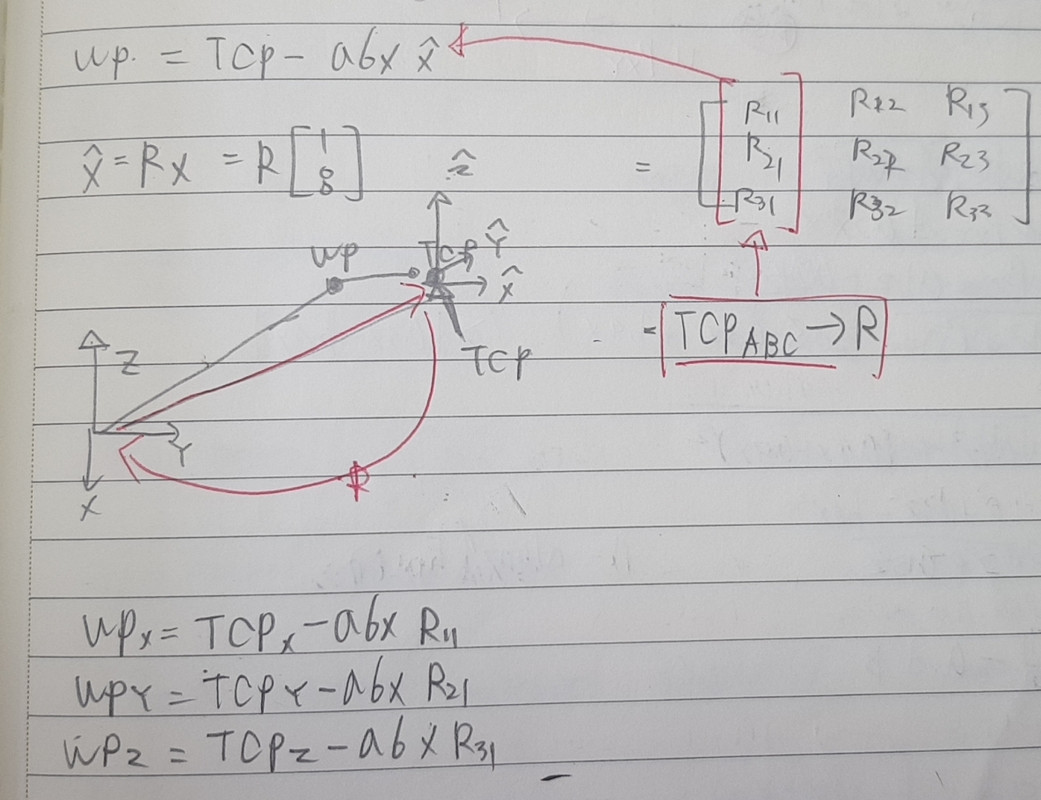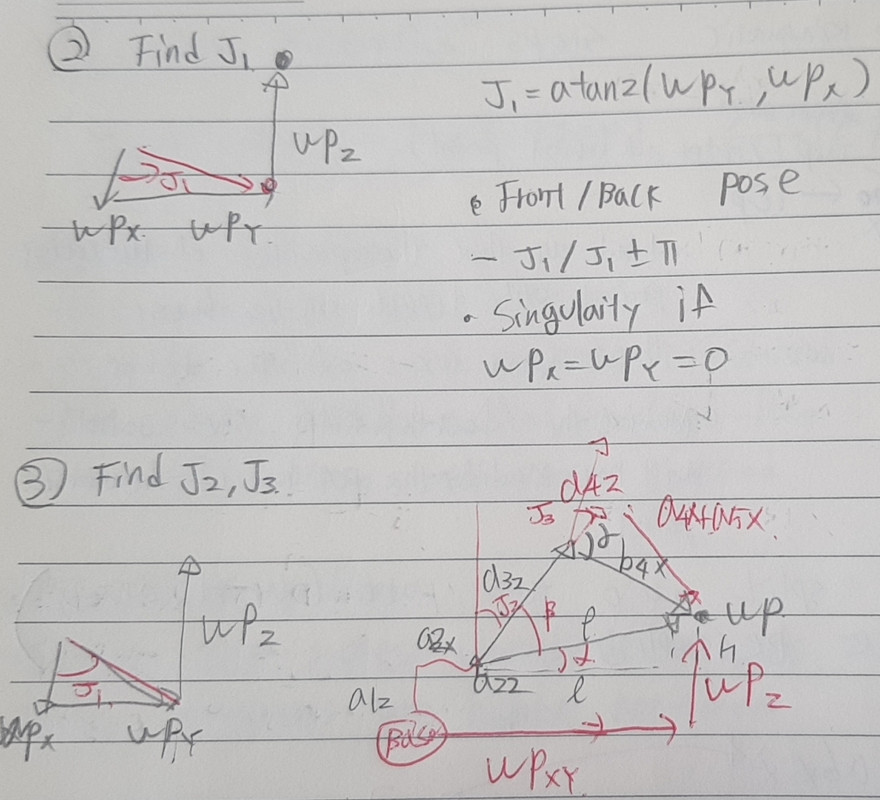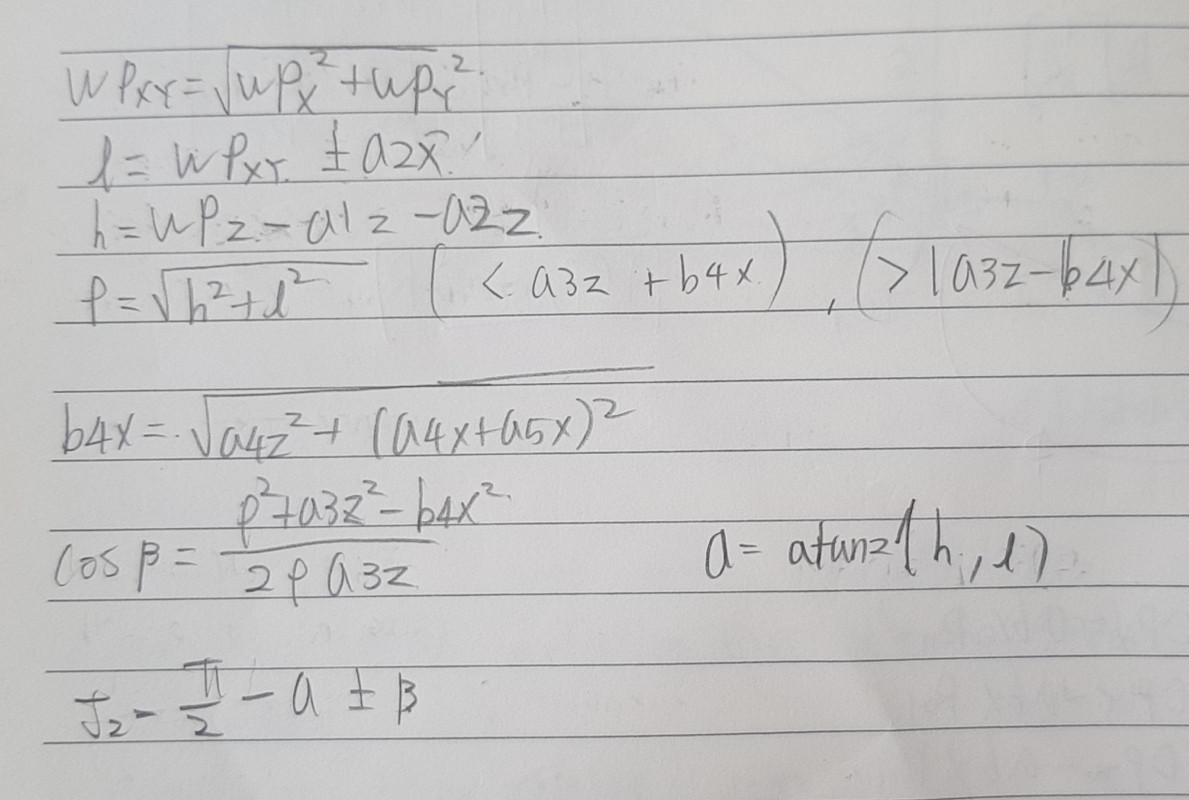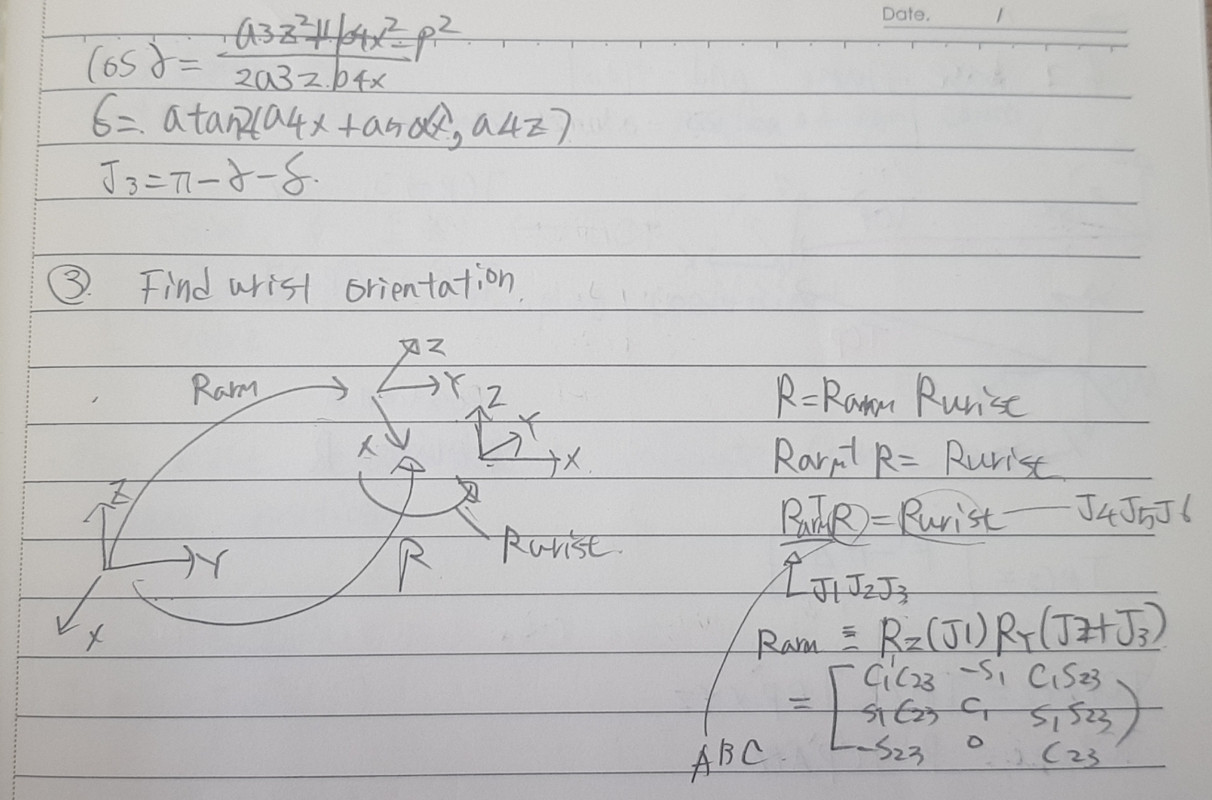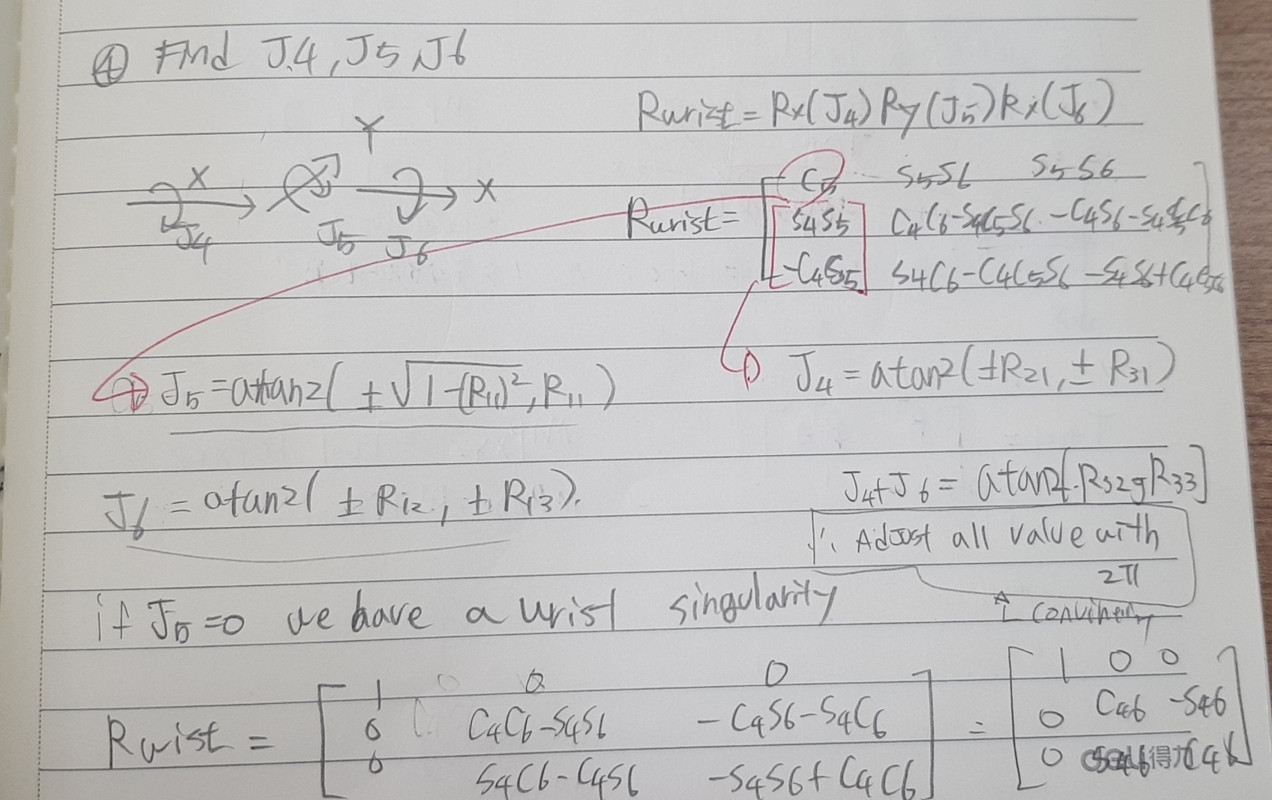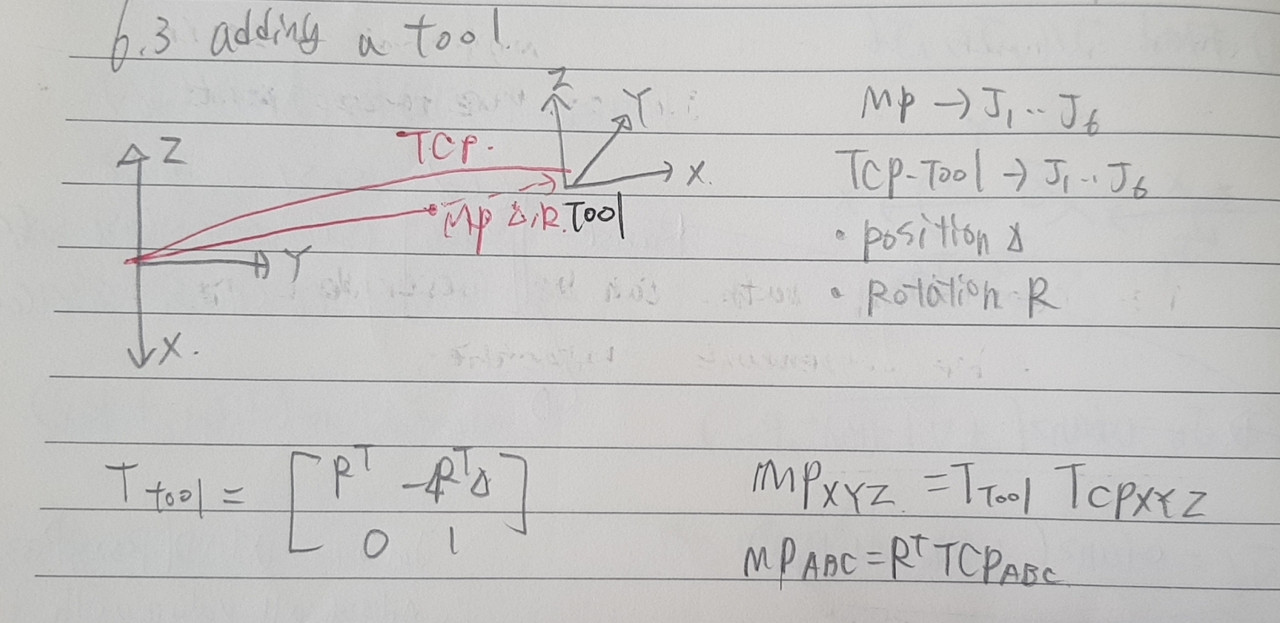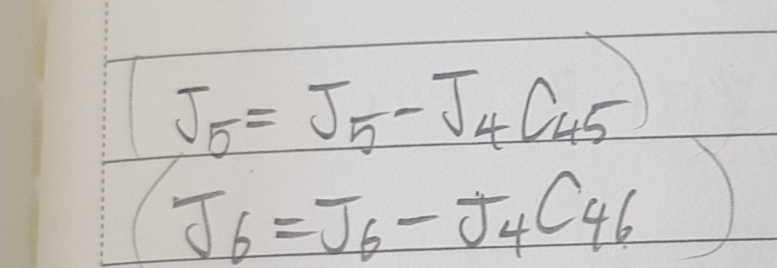5. Motion Planning
05 Oct 2019 | ROS
Motion Planning
Motion Planning
#!/usr/bin/env python
from copy import deepcopy
import math
import numpy
import random
from threading import Thread, Lock
import sys
import actionlib
import control_msgs.msg
import geometry_msgs.msg
import moveit_commander
import moveit_msgs.msg
import moveit_msgs.srv
import rospy
import sensor_msgs.msg
import tf
import trajectory_msgs.msg
def convert_to_message(T):
t = geometry_msgs.msg.Pose()
position = tf.transformations.translation_from_matrix(T)
orientation = tf.transformations.quaternion_from_matrix(T)
t.position.x = position[0]
t.position.y = position[1]
t.position.z = position[2]
t.orientation.x = orientation[0]
t.orientation.y = orientation[1]
t.orientation.z = orientation[2]
t.orientation.w = orientation[3]
return t
def convert_from_message(msg):
R = tf.transformations.quaternion_matrix((msg.orientation.x,
msg.orientation.y,
msg.orientation.z,
msg.orientation.w))
T = tf.transformations.translation_matrix((msg.position.x,
msg.position.y,
msg.position.z))
return numpy.dot(T,R)
def convert_from_trans_message(msg):
R = tf.transformations.quaternion_matrix((msg.rotation.x,
msg.rotation.y,
msg.rotation.z,
msg.rotation.w))
T = tf.transformations.translation_matrix((msg.translation.x,
msg.translation.y,
msg.translation.z))
return numpy.dot(T,R)
class Node(object):
def __init__(self,config):
# config list
self.config = config
self.parent = None
def SetParent(self,parent):
# Parent Node type
self.parent = parent
def GetParent(self):
return self.parent
def GetConfig(self):
return self.config
class MoveArm(object):
def __init__(self):
print "Motion Planning Initializing..."
# Prepare the mutex for synchronization
self.mutex = Lock()
# Some info and conventions about the robot that we hard-code in here
# min and max joint values are not read in Python urdf, so we must hard-code them here
self.num_joints = 7
self.q_min = []
self.q_max = []
self.q_min.append(-3.1459);self.q_max.append(3.1459)
self.q_min.append(-3.1459);self.q_max.append(3.1459)
self.q_min.append(-3.1459);self.q_max.append(3.1459)
self.q_min.append(-3.1459);self.q_max.append(3.1459)
self.q_min.append(-3.1459);self.q_max.append(3.1459)
self.q_min.append(-3.1459);self.q_max.append(3.1459)
self.q_min.append(-3.1459);self.q_max.append(3.1459)
# How finely to sample each joint
self.q_sample = [0.05, 0.05, 0.05, 0.1, 0.1, 0.1, 0.1]
self.joint_names = ["lwr_arm_0_joint",
"lwr_arm_1_joint",
"lwr_arm_2_joint",
"lwr_arm_3_joint",
"lwr_arm_4_joint",
"lwr_arm_5_joint",
"lwr_arm_6_joint"]
# Subscribes to information about what the current joint values are.
rospy.Subscriber("/joint_states", sensor_msgs.msg.JointState,
self.joint_states_callback)
# Subscribe to command for motion planning goal
rospy.Subscriber("/motion_planning_goal", geometry_msgs.msg.Transform,
self.move_arm_cb)
# Publish trajectory command
self.pub_trajectory = rospy.Publisher("/joint_trajectory", trajectory_msgs.msg.JointTrajectory,
queue_size=1)
# Initialize variables
self.joint_state = sensor_msgs.msg.JointState()
# Wait for moveit IK service
rospy.wait_for_service("compute_ik")
self.ik_service = rospy.ServiceProxy('compute_ik', moveit_msgs.srv.GetPositionIK)
print "IK service ready"
# Wait for validity check service
rospy.wait_for_service("check_state_validity")
self.state_valid_service = rospy.ServiceProxy('check_state_validity',
moveit_msgs.srv.GetStateValidity)
print "State validity service ready"
# Initialize MoveIt
self.robot = moveit_commander.RobotCommander()
self.scene = moveit_commander.PlanningSceneInterface()
self.group_name = "lwr_arm"
self.group = moveit_commander.MoveGroupCommander(self.group_name)
print "MoveIt! interface ready"
# Options
self.subsample_trajectory = True
print "Initialization done."
def get_joint_val(self, joint_state, name):
if name not in joint_state.name:
print "ERROR: joint name not found"
return 0
i = joint_state.name.index(name)
return joint_state.position[i]
def set_joint_val(self, joint_state, q, name):
if name not in joint_state.name:
print "ERROR: joint name not found"
i = joint_state.name.index(name)
joint_state.position[i] = q
""" Given a complete joint_state data structure, this function finds the values for
our arm's set of joints in a particular order and returns a list q[] containing just
those values.
"""
def q_from_joint_state(self, joint_state):
q = []
for i in range(0,self.num_joints):
q.append(self.get_joint_val(joint_state, self.joint_names[i]))
return q
""" Given a list q[] of joint values and an already populated joint_state, this
function assumes that the passed in values are for a our arm's set of joints in
a particular order and edits the joint_state data structure to set the values
to the ones passed in.
"""
def joint_state_from_q(self, joint_state, q):
for i in range(0,self.num_joints):
self.set_joint_val(joint_state, q[i], self.joint_names[i])
""" This function will perform IK for a given transform T of the end-effector. It
returns a list q[] of 7 values, which are the result positions for the 7 joints of
the left arm, ordered from proximal to distal. If no IK solution is found, it
returns an empy list.
"""
def IK(self, T_goal):
req = moveit_msgs.srv.GetPositionIKRequest()
req.ik_request.group_name = self.group_name
req.ik_request.robot_state = moveit_msgs.msg.RobotState()
req.ik_request.robot_state.joint_state = self.joint_state
req.ik_request.avoid_collisions = True
req.ik_request.pose_stamped = geometry_msgs.msg.PoseStamped()
req.ik_request.pose_stamped.header.frame_id = "world_link"
req.ik_request.pose_stamped.header.stamp = rospy.get_rostime()
req.ik_request.pose_stamped.pose = convert_to_message(T_goal)
req.ik_request.timeout = rospy.Duration(3.0)
res = self.ik_service(req)
q = []
if res.error_code.val == res.error_code.SUCCESS:
q = self.q_from_joint_state(res.solution.joint_state)
return q
""" This function checks if a set of joint angles q[] creates a valid state, or
one that is free of collisions. The values in q[] are assumed to be values for
the joints of the left arm, ordered from proximal to distal.
"""
def is_state_valid(self, q):
req = moveit_msgs.srv.GetStateValidityRequest()
req.group_name = self.group_name
current_joint_state = deepcopy(self.joint_state)
current_joint_state.position = list(current_joint_state.position)
self.joint_state_from_q(current_joint_state, q)
req.robot_state = moveit_msgs.msg.RobotState()
req.robot_state.joint_state = current_joint_state
res = self.state_valid_service(req)
return res.valid
def valid_point_func(self,q_start,q_goal):
## inputs : q_start,q_goal Node
## outputs : point without colision Node
step = 0.2
#### descritize the path
start_to_goal = q_goal - q_start
norm_stg = numpy.linalg.norm(start_to_goal)
unit_stg = start_to_goal/norm_stg
#n = numpy.max(numpy.abs(unit_stg/self.q_sample))
#step = (1/n)*unit_stg
#num_of_points = norm_stg/numpy.linalg.norm(step)
disc_points = numpy.outer(numpy.arange(step,norm_stg,step),unit_stg) + q_start
#disc_points = numpy.outer(numpy.arange(1,num_of_points+ 1),step) + q_start
#print(disc_points)
past_point = [q_start]
for disc_point in disc_points:
#print(self.is_state_valid(disc_point))
#print(past_point)
if self.is_state_valid(disc_point) == False:
return past_point
past_point = numpy.array([disc_point])
return q_goal
####################################################################################
def motion_plan(self, q_start, q_goal, q_min, q_max):
#print(q_goal)
# Replace this with your code
q_space = numpy.array([q_start],dtype=numpy.float64)
q_index = []
# start from the second point
#V = []
#E = []
step = 0.5
#V.append(Node(q_start.tolist()))
#for itr in range(100):
while True:
#print(itr)
if numpy.allclose(self.valid_point_func(q_space[-1],q_goal),numpy.array([q_goal])):
#print(self.valid_point_func(q_space[-1],q_goal))
#print(numpy.array(q_goal))
nearest_point = q_space[-1]
q_index.append(len(q_space)-1)
q_space = numpy.append(q_space,numpy.array([q_goal]),axis=0)
#node = Node(q_goal)
# for i in range(len(V)):
# if numpy.all(V[i].GetConfig() == nearest_point.tolist()):
# parent_node = V[i]
# break
#node.SetParent(-1)
#V.append(node)
break
#### generate random sample
q_random = []
for i in range(self.num_joints):
#q_random.append(random.uniform(-1,1)*3.1459)
q_random.append(random.uniform(-3.1459,3.1459))
#### find nearest point
q_random_np = numpy.array([q_random])
vec_to_points = q_space - q_random_np
index_to_nearest = numpy.argmin(numpy.sqrt(numpy.sum((vec_to_points)**2,axis=1)))
#print(numpy.sqrt(numpy.sum((vec_to_points)**2)))
#print(len(vec_to_points))
nearest_point = q_space[index_to_nearest]
#### point lies in 0.25 distance from point to the generated point
nearest_to_random = q_random_np - nearest_point
norm_ntr = numpy.linalg.norm(nearest_to_random)
unit_ntr = nearest_to_random/norm_ntr
# point in directed direction
next_point = nearest_point + unit_ntr*step
#### return a valid point
valid_point = self.valid_point_func(nearest_point,next_point)
#########################################################################################################
#### append it to the array
q_space = numpy.append(q_space,valid_point,axis=0)
q_index.append(index_to_nearest)
#node = Node(valid_point[0].tolist())
#for i in range(len(V)):
# if numpy.all(V[i].GetConfig() == nearest_point.tolist()):
# parent_node = V[i]
# break
#node.SetParent(parent_node)
#V.append(node)
#print(q_space)
#print('X'*50)
#node = V[-1]
#print(q_index)
#print(q_space)
q_list = []
cur_index = q_index[-1]
q_list.append(q_goal)
for i in range(len(q_space)):
if numpy.all(q_space[cur_index] == q_start):
q_list.append(q_start.tolist())
break
q_list.append(q_space[cur_index].tolist())
cur_index = q_index[cur_index - 1]
# q_list.append(node.GetConfig())
# node = node.GetParent()
#print(q_start)
#print(q_goal)
q_list.reverse()
#print(q_list)
return q_list
def create_trajectory(self, q_list, v_list, a_list, t):
joint_trajectory = trajectory_msgs.msg.JointTrajectory()
for i in range(0, len(q_list)):
point = trajectory_msgs.msg.JointTrajectoryPoint()
point.positions = list(q_list[i])
point.velocities = list(v_list[i])
point.accelerations = list(a_list[i])
point.time_from_start = rospy.Duration(t[i])
joint_trajectory.points.append(point)
joint_trajectory.joint_names = self.joint_names
return joint_trajectory
def create_trajectory(self, q_list):
joint_trajectory = trajectory_msgs.msg.JointTrajectory()
for i in range(0, len(q_list)):
point = trajectory_msgs.msg.JointTrajectoryPoint()
point.positions = list(q_list[i])
joint_trajectory.points.append(point)
joint_trajectory.joint_names = self.joint_names
return joint_trajectory
def project_plan(self, q_start, q_goal, q_min, q_max):
q_list = self.motion_plan(q_start, q_goal, q_min, q_max)
joint_trajectory = self.create_trajectory(q_list)
return joint_trajectory
def move_arm_cb(self, msg):
T = convert_from_trans_message(msg)
self.mutex.acquire()
q_start = self.q_from_joint_state(self.joint_state)
#print(self.is_state_valid([0.9332970208293161, 0.7256278570990718, 2.5594325471094663, 1.7652295464395606, 0.4708529716243601, -0.17818698208150993, 0.5357455372788732]))
print "Solving IK"
q_goal = self.IK(T)
if len(q_goal)==0:
print "IK failed, aborting"
self.mutex.release()
return
print "IK solved, planning"
trajectory = self.project_plan(numpy.array(q_start), q_goal, self.q_min, self.q_max)
if not trajectory.points:
print "Motion plan failed, aborting"
else:
print "Trajectory received with " + str(len(trajectory.points)) + " points"
self.execute(trajectory)
self.mutex.release()
def joint_states_callback(self, joint_state):
self.mutex.acquire()
self.joint_state = joint_state
self.mutex.release()
def execute(self, joint_trajectory):
self.pub_trajectory.publish(joint_trajectory)
if __name__ == '__main__':
moveit_commander.roscpp_initialize(sys.argv)
rospy.init_node('move_arm', anonymous=True)
ma = MoveArm()
rospy.spin()
Motion Planning
Motion Planning
#!/usr/bin/env python
from copy import deepcopy
import math
import numpy
import random
from threading import Thread, Lock
import sys
import actionlib
import control_msgs.msg
import geometry_msgs.msg
import moveit_commander
import moveit_msgs.msg
import moveit_msgs.srv
import rospy
import sensor_msgs.msg
import tf
import trajectory_msgs.msg
def convert_to_message(T):
t = geometry_msgs.msg.Pose()
position = tf.transformations.translation_from_matrix(T)
orientation = tf.transformations.quaternion_from_matrix(T)
t.position.x = position[0]
t.position.y = position[1]
t.position.z = position[2]
t.orientation.x = orientation[0]
t.orientation.y = orientation[1]
t.orientation.z = orientation[2]
t.orientation.w = orientation[3]
return t
def convert_from_message(msg):
R = tf.transformations.quaternion_matrix((msg.orientation.x,
msg.orientation.y,
msg.orientation.z,
msg.orientation.w))
T = tf.transformations.translation_matrix((msg.position.x,
msg.position.y,
msg.position.z))
return numpy.dot(T,R)
def convert_from_trans_message(msg):
R = tf.transformations.quaternion_matrix((msg.rotation.x,
msg.rotation.y,
msg.rotation.z,
msg.rotation.w))
T = tf.transformations.translation_matrix((msg.translation.x,
msg.translation.y,
msg.translation.z))
return numpy.dot(T,R)
class Node(object):
def __init__(self,config):
# config list
self.config = config
self.parent = None
def SetParent(self,parent):
# Parent Node type
self.parent = parent
def GetParent(self):
return self.parent
def GetConfig(self):
return self.config
class MoveArm(object):
def __init__(self):
print "Motion Planning Initializing..."
# Prepare the mutex for synchronization
self.mutex = Lock()
# Some info and conventions about the robot that we hard-code in here
# min and max joint values are not read in Python urdf, so we must hard-code them here
self.num_joints = 7
self.q_min = []
self.q_max = []
self.q_min.append(-3.1459);self.q_max.append(3.1459)
self.q_min.append(-3.1459);self.q_max.append(3.1459)
self.q_min.append(-3.1459);self.q_max.append(3.1459)
self.q_min.append(-3.1459);self.q_max.append(3.1459)
self.q_min.append(-3.1459);self.q_max.append(3.1459)
self.q_min.append(-3.1459);self.q_max.append(3.1459)
self.q_min.append(-3.1459);self.q_max.append(3.1459)
# How finely to sample each joint
self.q_sample = [0.05, 0.05, 0.05, 0.1, 0.1, 0.1, 0.1]
self.joint_names = ["lwr_arm_0_joint",
"lwr_arm_1_joint",
"lwr_arm_2_joint",
"lwr_arm_3_joint",
"lwr_arm_4_joint",
"lwr_arm_5_joint",
"lwr_arm_6_joint"]
# Subscribes to information about what the current joint values are.
rospy.Subscriber("/joint_states", sensor_msgs.msg.JointState,
self.joint_states_callback)
# Subscribe to command for motion planning goal
rospy.Subscriber("/motion_planning_goal", geometry_msgs.msg.Transform,
self.move_arm_cb)
# Publish trajectory command
self.pub_trajectory = rospy.Publisher("/joint_trajectory", trajectory_msgs.msg.JointTrajectory,
queue_size=1)
# Initialize variables
self.joint_state = sensor_msgs.msg.JointState()
# Wait for moveit IK service
rospy.wait_for_service("compute_ik")
self.ik_service = rospy.ServiceProxy('compute_ik', moveit_msgs.srv.GetPositionIK)
print "IK service ready"
# Wait for validity check service
rospy.wait_for_service("check_state_validity")
self.state_valid_service = rospy.ServiceProxy('check_state_validity',
moveit_msgs.srv.GetStateValidity)
print "State validity service ready"
# Initialize MoveIt
self.robot = moveit_commander.RobotCommander()
self.scene = moveit_commander.PlanningSceneInterface()
self.group_name = "lwr_arm"
self.group = moveit_commander.MoveGroupCommander(self.group_name)
print "MoveIt! interface ready"
# Options
self.subsample_trajectory = True
print "Initialization done."
def get_joint_val(self, joint_state, name):
if name not in joint_state.name:
print "ERROR: joint name not found"
return 0
i = joint_state.name.index(name)
return joint_state.position[i]
def set_joint_val(self, joint_state, q, name):
if name not in joint_state.name:
print "ERROR: joint name not found"
i = joint_state.name.index(name)
joint_state.position[i] = q
""" Given a complete joint_state data structure, this function finds the values for
our arm's set of joints in a particular order and returns a list q[] containing just
those values.
"""
def q_from_joint_state(self, joint_state):
q = []
for i in range(0,self.num_joints):
q.append(self.get_joint_val(joint_state, self.joint_names[i]))
return q
""" Given a list q[] of joint values and an already populated joint_state, this
function assumes that the passed in values are for a our arm's set of joints in
a particular order and edits the joint_state data structure to set the values
to the ones passed in.
"""
def joint_state_from_q(self, joint_state, q):
for i in range(0,self.num_joints):
self.set_joint_val(joint_state, q[i], self.joint_names[i])
""" This function will perform IK for a given transform T of the end-effector. It
returns a list q[] of 7 values, which are the result positions for the 7 joints of
the left arm, ordered from proximal to distal. If no IK solution is found, it
returns an empy list.
"""
def IK(self, T_goal):
req = moveit_msgs.srv.GetPositionIKRequest()
req.ik_request.group_name = self.group_name
req.ik_request.robot_state = moveit_msgs.msg.RobotState()
req.ik_request.robot_state.joint_state = self.joint_state
req.ik_request.avoid_collisions = True
req.ik_request.pose_stamped = geometry_msgs.msg.PoseStamped()
req.ik_request.pose_stamped.header.frame_id = "world_link"
req.ik_request.pose_stamped.header.stamp = rospy.get_rostime()
req.ik_request.pose_stamped.pose = convert_to_message(T_goal)
req.ik_request.timeout = rospy.Duration(3.0)
res = self.ik_service(req)
q = []
if res.error_code.val == res.error_code.SUCCESS:
q = self.q_from_joint_state(res.solution.joint_state)
return q
""" This function checks if a set of joint angles q[] creates a valid state, or
one that is free of collisions. The values in q[] are assumed to be values for
the joints of the left arm, ordered from proximal to distal.
"""
def is_state_valid(self, q):
req = moveit_msgs.srv.GetStateValidityRequest()
req.group_name = self.group_name
current_joint_state = deepcopy(self.joint_state)
current_joint_state.position = list(current_joint_state.position)
self.joint_state_from_q(current_joint_state, q)
req.robot_state = moveit_msgs.msg.RobotState()
req.robot_state.joint_state = current_joint_state
res = self.state_valid_service(req)
return res.valid
def valid_point_func(self,q_start,q_goal):
## inputs : q_start,q_goal Node
## outputs : point without colision Node
step = 0.2
#### descritize the path
start_to_goal = q_goal - q_start
norm_stg = numpy.linalg.norm(start_to_goal)
unit_stg = start_to_goal/norm_stg
#n = numpy.max(numpy.abs(unit_stg/self.q_sample))
#step = (1/n)*unit_stg
#num_of_points = norm_stg/numpy.linalg.norm(step)
disc_points = numpy.outer(numpy.arange(step,norm_stg,step),unit_stg) + q_start
#disc_points = numpy.outer(numpy.arange(1,num_of_points+ 1),step) + q_start
#print(disc_points)
past_point = [q_start]
for disc_point in disc_points:
#print(self.is_state_valid(disc_point))
#print(past_point)
if self.is_state_valid(disc_point) == False:
return past_point
past_point = numpy.array([disc_point])
return q_goal
####################################################################################
def motion_plan(self, q_start, q_goal, q_min, q_max):
#print(q_goal)
# Replace this with your code
q_space = numpy.array([q_start],dtype=numpy.float64)
q_index = []
# start from the second point
#V = []
#E = []
step = 0.5
#V.append(Node(q_start.tolist()))
#for itr in range(100):
while True:
#print(itr)
if numpy.allclose(self.valid_point_func(q_space[-1],q_goal),numpy.array([q_goal])):
#print(self.valid_point_func(q_space[-1],q_goal))
#print(numpy.array(q_goal))
nearest_point = q_space[-1]
q_index.append(len(q_space)-1)
q_space = numpy.append(q_space,numpy.array([q_goal]),axis=0)
#node = Node(q_goal)
# for i in range(len(V)):
# if numpy.all(V[i].GetConfig() == nearest_point.tolist()):
# parent_node = V[i]
# break
#node.SetParent(-1)
#V.append(node)
break
#### generate random sample
q_random = []
for i in range(self.num_joints):
#q_random.append(random.uniform(-1,1)*3.1459)
q_random.append(random.uniform(-3.1459,3.1459))
#### find nearest point
q_random_np = numpy.array([q_random])
vec_to_points = q_space - q_random_np
index_to_nearest = numpy.argmin(numpy.sqrt(numpy.sum((vec_to_points)**2,axis=1)))
#print(numpy.sqrt(numpy.sum((vec_to_points)**2)))
#print(len(vec_to_points))
nearest_point = q_space[index_to_nearest]
#### point lies in 0.25 distance from point to the generated point
nearest_to_random = q_random_np - nearest_point
norm_ntr = numpy.linalg.norm(nearest_to_random)
unit_ntr = nearest_to_random/norm_ntr
# point in directed direction
next_point = nearest_point + unit_ntr*step
#### return a valid point
valid_point = self.valid_point_func(nearest_point,next_point)
#########################################################################################################
#### append it to the array
q_space = numpy.append(q_space,valid_point,axis=0)
q_index.append(index_to_nearest)
#node = Node(valid_point[0].tolist())
#for i in range(len(V)):
# if numpy.all(V[i].GetConfig() == nearest_point.tolist()):
# parent_node = V[i]
# break
#node.SetParent(parent_node)
#V.append(node)
#print(q_space)
#print('X'*50)
#node = V[-1]
#print(q_index)
#print(q_space)
q_list = []
cur_index = q_index[-1]
q_list.append(q_goal)
for i in range(len(q_space)):
if numpy.all(q_space[cur_index] == q_start):
q_list.append(q_start.tolist())
break
q_list.append(q_space[cur_index].tolist())
cur_index = q_index[cur_index - 1]
# q_list.append(node.GetConfig())
# node = node.GetParent()
#print(q_start)
#print(q_goal)
q_list.reverse()
#print(q_list)
return q_list
def create_trajectory(self, q_list, v_list, a_list, t):
joint_trajectory = trajectory_msgs.msg.JointTrajectory()
for i in range(0, len(q_list)):
point = trajectory_msgs.msg.JointTrajectoryPoint()
point.positions = list(q_list[i])
point.velocities = list(v_list[i])
point.accelerations = list(a_list[i])
point.time_from_start = rospy.Duration(t[i])
joint_trajectory.points.append(point)
joint_trajectory.joint_names = self.joint_names
return joint_trajectory
def create_trajectory(self, q_list):
joint_trajectory = trajectory_msgs.msg.JointTrajectory()
for i in range(0, len(q_list)):
point = trajectory_msgs.msg.JointTrajectoryPoint()
point.positions = list(q_list[i])
joint_trajectory.points.append(point)
joint_trajectory.joint_names = self.joint_names
return joint_trajectory
def project_plan(self, q_start, q_goal, q_min, q_max):
q_list = self.motion_plan(q_start, q_goal, q_min, q_max)
joint_trajectory = self.create_trajectory(q_list)
return joint_trajectory
def move_arm_cb(self, msg):
T = convert_from_trans_message(msg)
self.mutex.acquire()
q_start = self.q_from_joint_state(self.joint_state)
#print(self.is_state_valid([0.9332970208293161, 0.7256278570990718, 2.5594325471094663, 1.7652295464395606, 0.4708529716243601, -0.17818698208150993, 0.5357455372788732]))
print "Solving IK"
q_goal = self.IK(T)
if len(q_goal)==0:
print "IK failed, aborting"
self.mutex.release()
return
print "IK solved, planning"
trajectory = self.project_plan(numpy.array(q_start), q_goal, self.q_min, self.q_max)
if not trajectory.points:
print "Motion plan failed, aborting"
else:
print "Trajectory received with " + str(len(trajectory.points)) + " points"
self.execute(trajectory)
self.mutex.release()
def joint_states_callback(self, joint_state):
self.mutex.acquire()
self.joint_state = joint_state
self.mutex.release()
def execute(self, joint_trajectory):
self.pub_trajectory.publish(joint_trajectory)
if __name__ == '__main__':
moveit_commander.roscpp_initialize(sys.argv)
rospy.init_node('move_arm', anonymous=True)
ma = MoveArm()
rospy.spin()




















